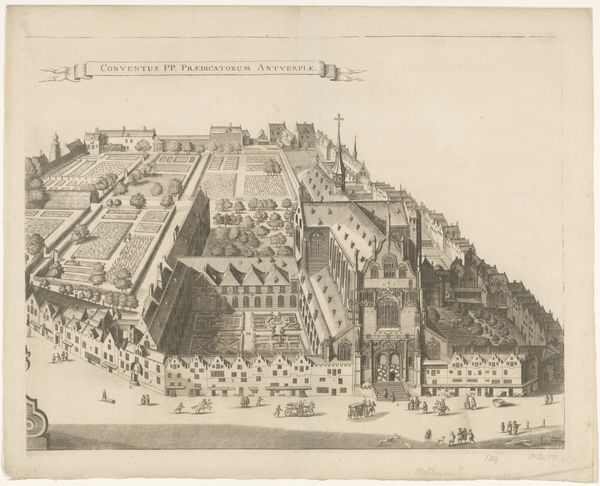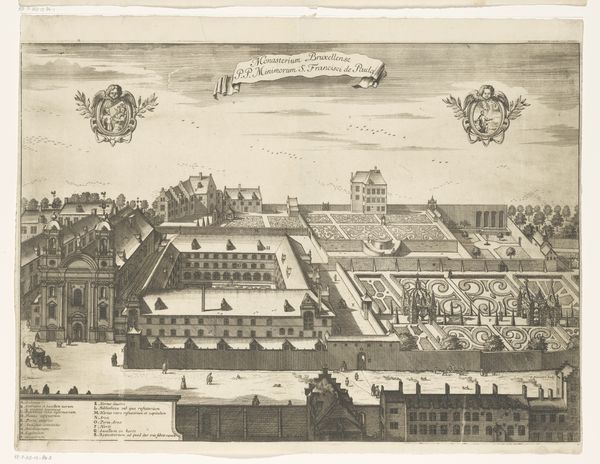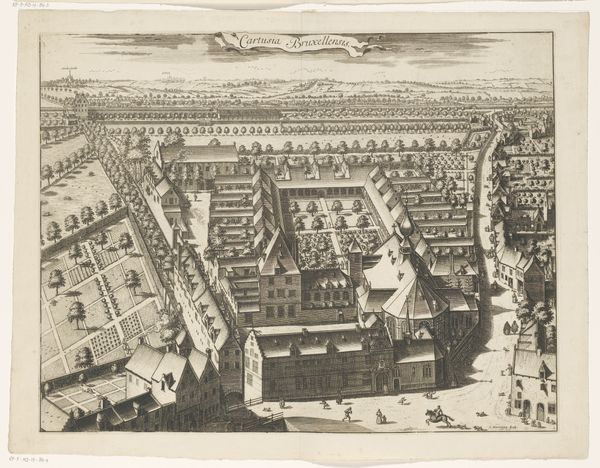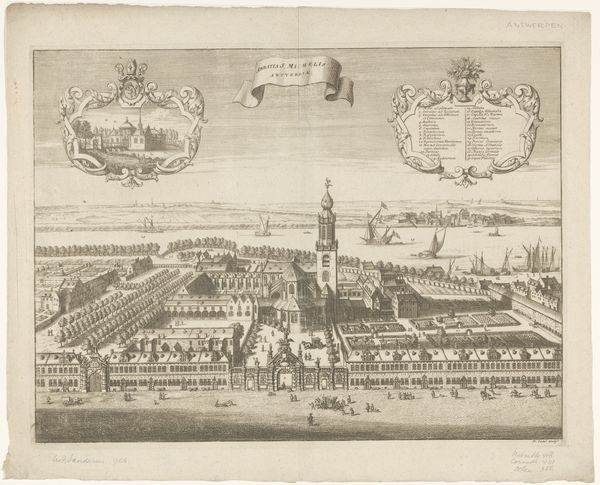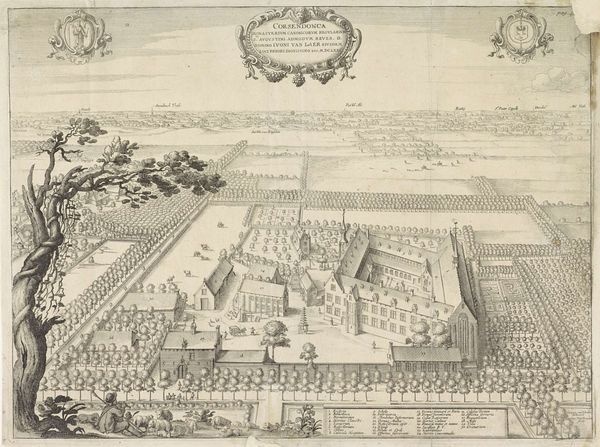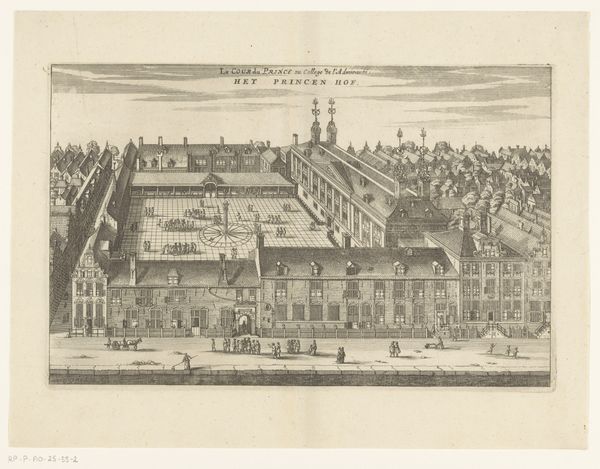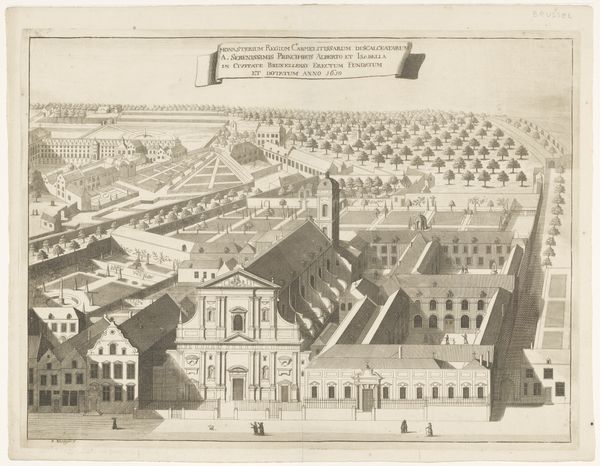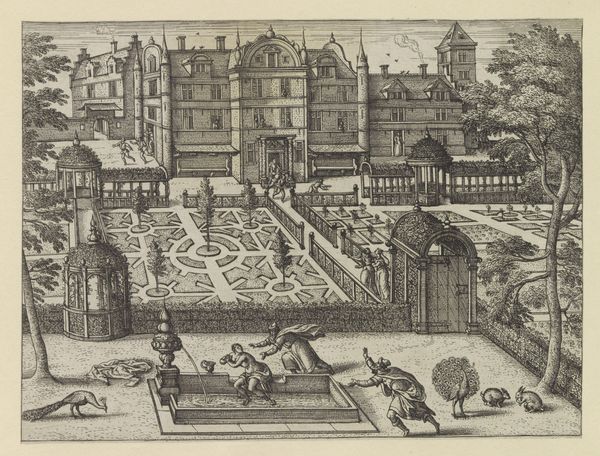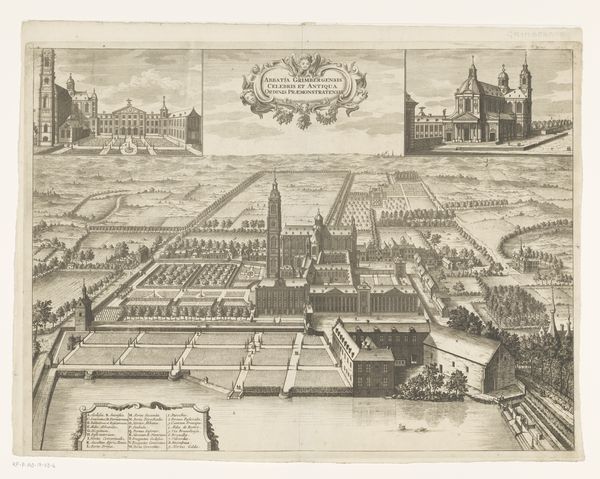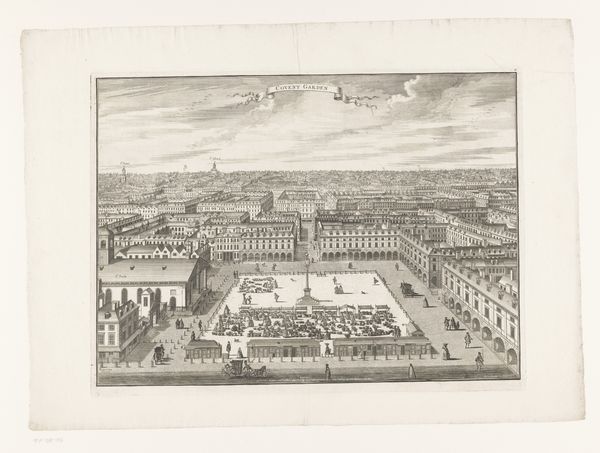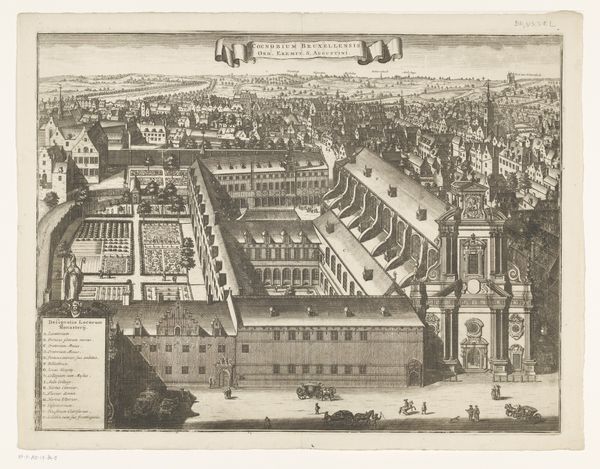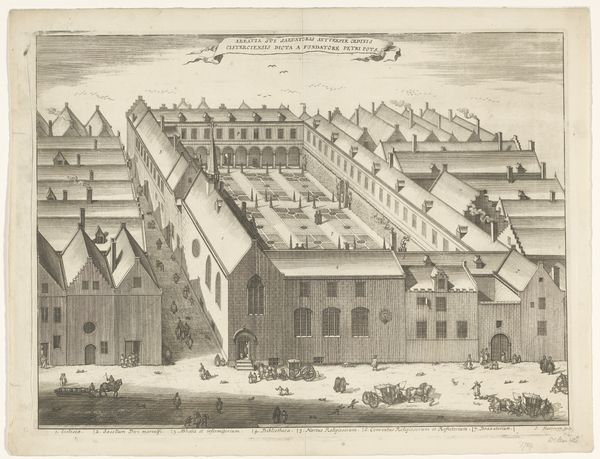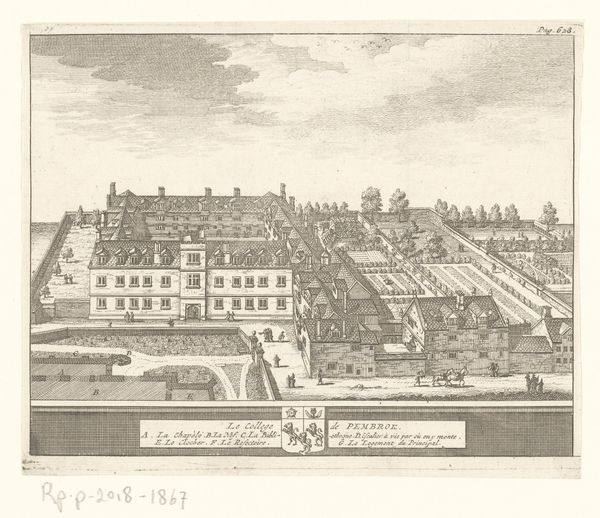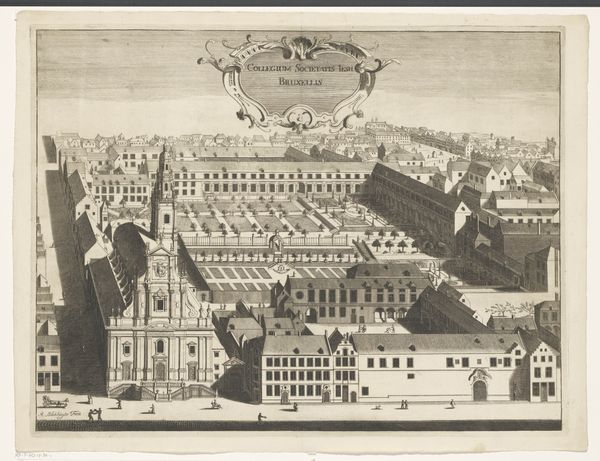
drawing, print, etching, engraving, architecture
#
drawing
#
baroque
#
dutch-golden-age
# print
#
etching
#
landscape
#
perspective
#
cityscape
#
engraving
#
architecture
Dimensions: height 372 mm, width 619 mm
Copyright: Rijks Museum: Open Domain
Curator: Allow me to introduce "Dominicaans klooster te Antwerpen," or "Dominican Monastery in Antwerp," created in 1661 by Lucas (II) Vorsterman. It's a detailed print showcasing the monastery. Editor: My first impression is that it feels like a blueprint, but with artistic flair. The composition leads your eye through the complex, and the level of detail is captivating. It’s impressive, architecturally, how he's created such clarity. Curator: Indeed. It's a masterful use of engraving and etching, mediums that were becoming increasingly sophisticated. The lines, etched or engraved with precision, delineate the architectural structures, garden layouts, and even human figures, revealing a specific level of labor and skill that reflects societal values around craft at the time. Editor: The perspective is fascinating. It is as if you're floating above, observing this enclosed world. I note how light and shadow are deployed, especially around the central church façade, creating depth and emphasizing its grandeur. Curator: And that is a direct consequence of Vorsterman's understanding of optics. The print offered viewers a chance to "possess" or survey urban development in a new way. This ability to reproduce and distribute views of urban space held considerable political and social implications, especially in the rapidly expanding mercantile society of Antwerp. Editor: The inclusion of human figures, albeit small, offers a sense of scale. Semiotically, these little people ground the imposing structure, connecting the divine with the everyday world. Note, too, how his choice of line quality, sometimes delicate and other times firm, affects the overall impression of solidity. Curator: Absolutely. It speaks volumes about accessibility and power too. Imagine how such prints made spaces and places more available to be consumed by wealthy patrons who never even visited the monastery. In terms of its function as art and a commodity, such reproductive technologies were important because they offered consumers a window onto a reality they might not otherwise experience, thus playing a vital role in shaping cultural attitudes about the city. Editor: Seeing this today reminds me that this isn't just a picture but an idea about urban planning and order. It's a Baroque ideal realized. I leave today thinking about all the various production layers required to accomplish this print. Curator: I agree, and perhaps, even more importantly, of what kind of consumption its reproduction promoted.
Comments
No comments
Be the first to comment and join the conversation on the ultimate creative platform.
